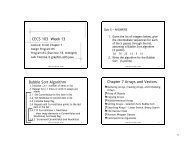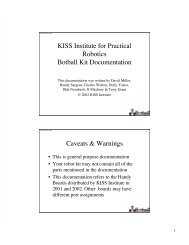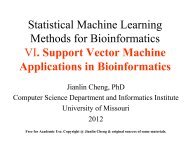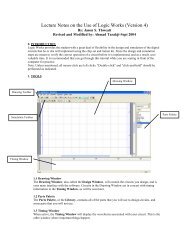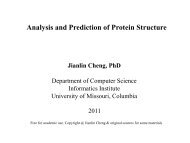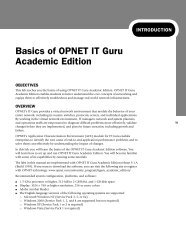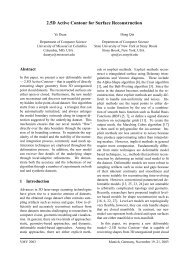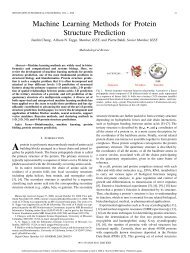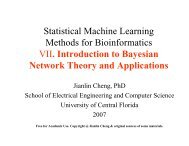Chapter X: Introduction to Fuzzy Set Theory Uncertainty is universal ...
Chapter X: Introduction to Fuzzy Set Theory Uncertainty is universal ...
Chapter X: Introduction to Fuzzy Set Theory Uncertainty is universal ...
You also want an ePaper? Increase the reach of your titles
YUMPU automatically turns print PDFs into web optimized ePapers that Google loves.
{ A(x ) ∧ B(x ) y x # }<br />
( A#B)(y) = sup 1 2 = 1 x2<br />
. Th<strong>is</strong> <strong>is</strong> tedious at best, and in the continuous case involves<br />
solving a nonlinear program for each value of y. However, for fuzzy numbers and the basic arithmetic<br />
opera<strong>to</strong>rs, we have that<br />
α<br />
(A#B) = (<br />
α<br />
A) # (<br />
α<br />
B) . Since the α-cuts of a fuzzy number are closed intervals, computing the a-cut of<br />
the extended arithmetic operation reduces <strong>to</strong> interval arithmetic, something that <strong>is</strong> easy <strong>to</strong> do. Then using<br />
the decomposition theorem, we fin<strong>is</strong>h th<strong>is</strong> off by noting that<br />
⎛<br />
⎞<br />
⎜<br />
⎟<br />
A#B= ⎜ α ( A#B) ⎟<br />
⎝α∈[0,1]<br />
⎠<br />
⎧<br />
⎪<br />
if x - 4 or x 3<br />
x 0<br />
< ><br />
⎪ + 4<br />
⎨<br />
if - 4 x 0<br />
Example X.xx: Let A(x) = - x<br />
4 ≤ ≤<br />
⎪<br />
3 if 0 < x ≤ 3<br />
⎪ +<br />
⎩ 3<br />
and<br />
B(x) =<br />
⎧ 0<br />
⎪<br />
⎨x<br />
+ 2<br />
⎪<br />
⎩ - x<br />
if x < - 2 or x > 0<br />
if - 2<br />
≤ x ≤ -1<br />
if -1<<br />
x ≤ 0<br />
Find 0.5 A and 0.5 B. Compute 0.5 A + 0.5 B = 0.5 (A+B)<br />
From the Extension Principle, give a detailed explanation of how the single value of MAX(A,B)(-3/2) <strong>is</strong><br />
calculated.<br />
NEED PICTURE and EXAMPLE HERE<br />
R<br />
X.4.3 Compensa<strong>to</strong>ry opera<strong>to</strong>rs



